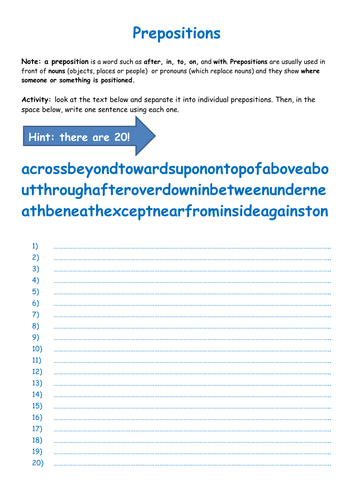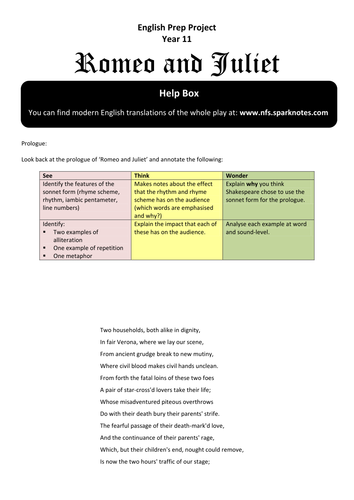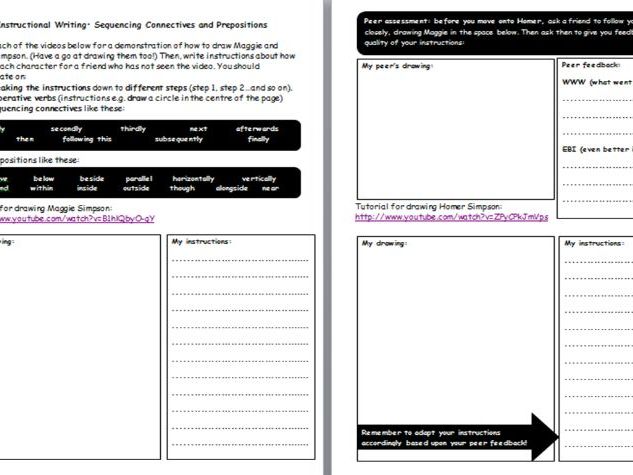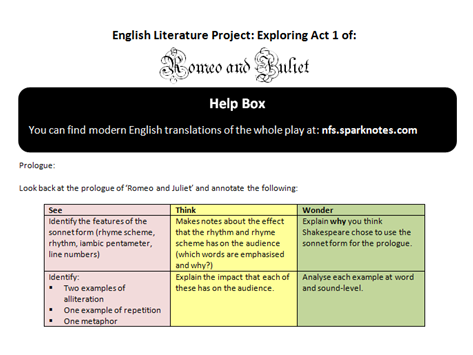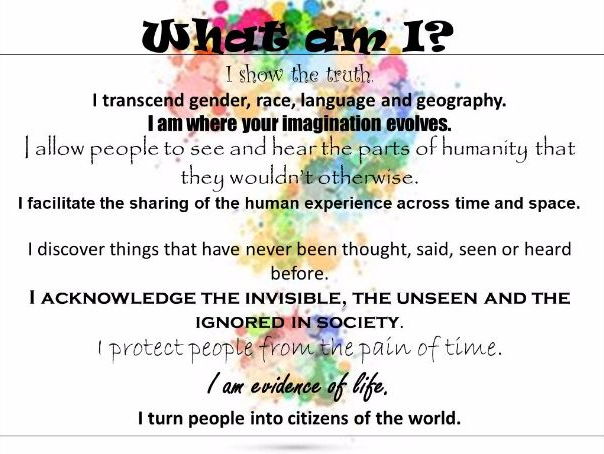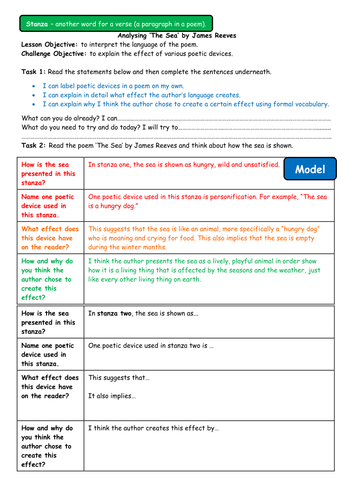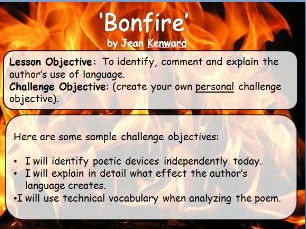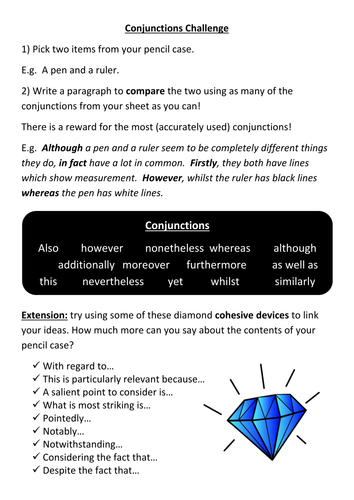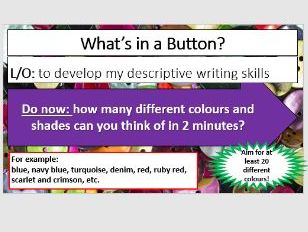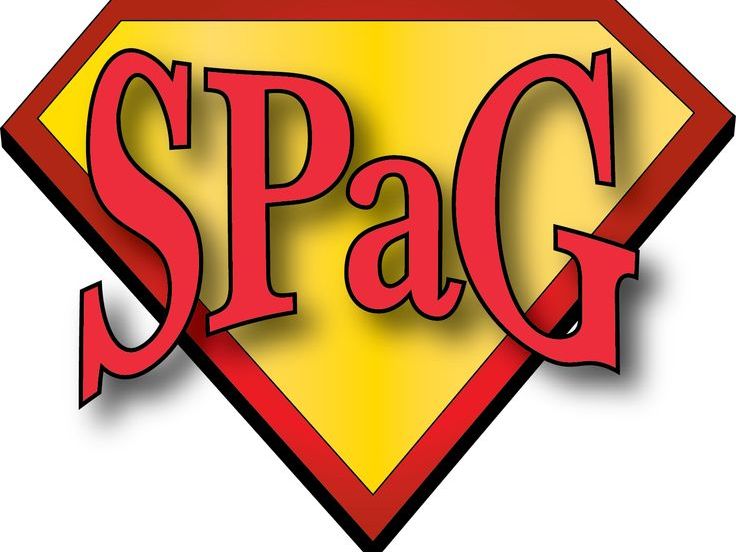44Uploads
57k+Views
4k+Downloads
English language arts

Bloom's Taxonomy Verbs Posters
A colourful set of posters of Bloom's Taxonomy verbs - great for creating lesson objectives or challenging your pupils to write their own.

Prepositions Worksheet
A simple explanation of what prepositions are, coupled with two short activities to allow pupils to identify and use them for themselves. Editable, ready-to-use and ideal for EAL learners.

Modal Verbs: An introduction and activities
A straightforward introduction to modal verbs on an editable, ready-to-use worksheet. Fantastic for EAL learners!

'The Sign of Four': A Thematic Map
A two page, editable, pictorial map designed to aid pupils to explore the major themes if the novel: fear; crime & punishment; wealth & class; the British Empire; love; the exotic; women and intellect vs. emotion. A fantastic revision exercise and/or quote finding activity. For whole lesson:
1) Divide pupils into differentiated groups and allocate roles accordingly (Director, time-keeper, inclusion manager, etc.).
2) Allocate themes to individual pupils/pairs to find evidence supporting their ideas. Differentiation: guidance could be provided as to page numbers/chapters, etc. Challenge: to choose the best three quotes as evidence for the allocated theme(s).
3) Make the task a challenge, by allowing pupils to vote for the hardest worker/most valuable contribution per group.
4)Feedback to whole class or, divide groups and rotate to share their findings with classmates!

Examining Key Excerpts from Act One of Romeo and Juliet
A booklet which guides pupils through key extracts from Act One of the play, prompting them to: closely annotate; question and interrogate the text, independently. Designed to meet the AO1 and AO2 of the new spec AQA English Literature course.

Interactive Persuasive Devices Quiz (using DAFOREST techniques)
An interactive quiz to revise features of persuasive writing using DAFOREST techniques (direct address, alliteration, facts,opinions, rhetorical question, emotive language, statistics and the rule of three). A fun starter, plenary or mini-plenary!

SPaG: Prepositions, Sequencing Conjunctions & Instructional Writing
A fun lesson in which pupils follow online tutorials to learn how to draw characters from The Simpsons. This worksheet guides them through using prepositions and sequencing conjunctions in their instructional writing. Includes a peer assessment activity!

Transition Lesson - Analysing Similes & Metaphors in 'Firework' by Katy Perry
A fun, editable, ready-to-use lesson which guides pupils through exploring similes and metaphors in song lyrics. Differentiated lesson and challenge objectives.Proven success in numerous Transition Days across Years 5 to 8 in my current school.

Exploring Love & Marriage in The Importance of Being Earnest
A full lesson exploring the presentation of love and marriage in acts one and two of TIofBE, based on the iGCSE English Literature specification. Created for a lesson observation, all supporting materials and lesson plan are included. Differentiated for grades C/D or grade 3/4.

Chapter Two of 'Skellig' by David Almond
A series of lessons (2-3 depending upon ability), exploring the use of adjectives in chapter two of ‘Skellig’ by David Almond. Includes differentiated lesson objectives and a ready to use worksheet.

Differentiated 10 Page Booklet Exploring Five Excerpts from Act One of 'Romeo & Juliet'
A colourful, editable Word document which guides pupils through exploring excerpts from five key scenes from Act One of the play. Could be used as a project or series of lessons for individual or group work or separated into 5 different worksheets!
- Using the See, Think, Wonder technique, pupils can independently examine each scene in depth
- For differentiation: 'See' is the least challenging step; 'Think' is slightly more challenging and finally 'Wonder' is the most sophisticated process
- Includes an overview of the PEELER paragraph model (brilliant for scaffolding pupils in developing in-depth analysis skills)
- Includes GCSE examination style questions
- A great tool for encouraging independent learning

Back to School - Independent Learning Project - Literature Matters
An independent learning project which asks 'big' questions to stimulate higher order thinking and encourages pupils to reconnect with literature and develop their discussion, debate and reasoning skills. Very thought-provoking and fun, even for your quietest classes! Includes editable PPT, editable pupil booklet and a differentiated reading list.

A Differentiated Poetry Lesson: Analysing'The Sea' by James Reeves
A differentiated two page worksheet and copy of the poem 'The Sea' by James Reeves suitable for teaching pupils how to identify, comment and explain the structure and language of poetry. Plus a little AfL for good measure.

Chapter One of 'Skellig' by David Almond
A whole lesson exploring the opening of ‘Skellig’ by David Almond. Includes differentiated lesson objectives and a ready to use worksheet.

A Differentiated Poetry Lesson: Analysing 'Bonfire' by Jean Kenward
A full lesson including: A copy of the poem with key terms; a card sort starter which introduces the poetic devices used in the poem; a differentiated activity analysing the poem and a PPT presentation which guides pupils through each activity.

Comparative Conjunctions and Cohesive Devices
A worksheet that could be used as a starter or group challenge to helps learners to link their ideas effectively.

What's in a Button? A Descriptive Writing Mini Unit
A differentiated mini unit of 3+ lessons that guides students through describing a character, starting with a button from their clothing. Includes a colourful, easy-to-follow powerpoint presentation and an accompanying student worksheet. Key terms are provided for lower attainers as well as challenges to stretch more confident learners. TIP: provide learner with actual buttons - realia is fantastic for developing sensory description!
Bundle

SPaG Bumper Bundle!
A series of five ready-to-use, editable worksheets and two lessons covering the following SPaG topics:
Punctuation
Modal verbs
Prepositions (x 2)
Conjunctions (x 3)


